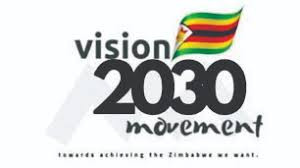
What is an Environmental Impact Assessment (EIA?)
An EIA is a process which identifies the environmental impacts of a development project and clearly outlines measures to mitigate the negative impacts caused during project construction, implementation and decommissioning.
The purpose of the assessment is to ensure that decision makers consider the environmental impacts when deciding whether or not to proceed with a project. The International Association for Impact Assessment (IAIA) defines an environmental impact assessment as “the process of identifying, predicting, evaluating and mitigating the biophysical, social, and other relevant effects of development proposals prior to major decisions being taken and commitments made. EIAs require decision ¬makers to account for environmental values in their decisions and to justify those decisions in light of detailed environmental studies and public comments on potential environmental impacts.
What is the EIA legislative policy? The Environmental Management Act (CAP 20:27) of 2002 and Statutory Instrument 7 of 2007 (Environmental Impact Assessment and Ecosystems Protection) state that prescribed projects listed under the first schedule of the EMA Act (Cap 20:27) should undergo an EIA prior to implementation.
Which projects require an EIA? The projects that require an EIA are listed in the first schedule of the Environmental Management Act. They are as follows:
- Dams and manmade lakes;
- Drainage of wetlands and irrigation schemes
- Conversion of forest land to other use;
- Conversion of natural woodland to other use within the catchment area of reservoirs used for water supply, irrigation or hydropower generation or in areas adjacent to the Parks and Wildlife estate;
- Housing developments;
- Industry-chemical plants, iron and steel smelters and plants, smelters other than iron and steel, petrochemical plants, cement plants, lime plants, agro-industries, pulp and paper mills, tanneries, breweries and industries involving the use, manufacture, handling, storage, transport or disposal of hazardous- or toxic material.
- Infrastructure-highways, airports, new railway routes and branch lines, new towns or townships, industrial sites;
- Mining and quarrying-mineral prospecting; mineral mining; ore processing and concentrating; quarrying;
- Petroleum production, storage and distribution;
- Power generation and transmission- thermal power stations, hydropower schemes and high voltage transmission lines;
- Tourist resorts and recreational developments — resort facilities and hotels, marinas and safari operators;
- Waste treatment and disposal-toxic and hazardous waste: incineration plants, recovery plants, waste water treatment plants, landfill facilities and storage facilities; municipal solid waste: incineration, composting, recovery and recycling plants and landfill facilities; municipal sewage: waste treatment plants, outfalls into aquatic systems, effluent water irrigation schemes and
- Water supply- groundwater development for industrial, agricultural or urban water supply; major canals, cross drainage water transfers, major pipelines and water withdrawals from rivers and reservoirs.
What is involved in conducting an EIA study? Before doing an environmental impact assessment for a project, a developer shall submit a prospectus to the director general containing information on the project such as the nature of project, location, size, area sensitivity and project implementation strategy among other issues. If the director general is satisfied that the proposed environmental impact assessment will be capable of evaluating the project’s impact on the environment, the developer will be given the green light to prepare an environmental impact assessment. If not satisfied the prospectus may be rejected and the developer may be required to submit additional information. When approving a prospectus the director general may fix conditions relating to the scope of the assessment and the developer concerned shall comply with any such conditions.
How long does it take to review an EIA study?
The director general responds to the submission of an environmental impact assessment report within 20 working days. If the director general does not respond within this time the project shall be deemed to have been approved.
- Chamisa under fire over US$120K donation
- Mavhunga puts DeMbare into Chibuku quarterfinals
- Pension funds bet on Cabora Bassa oilfields
- Councils defy govt fire tender directive
Keep Reading
Who carries out the EIA study? The developer shall engage an environmental consultant; a person independent of the development who is an expert in environmental planning and management services to prepare the environmental impact assessment. The environmental consultant should be registered with EMA.
How do I get hold of consultants?
The list of registered consultants is available on the EMA website www.ema.co.zw.
How much are the EIA review fees?
The consultant charges his or her fee for compiling the EIA document. The Environmental Management Agency (EMA) charges a review fee which is a fraction of the total project cost depending on the potential negative impacts of a project. The review fees are charged on a sliding scale from 0,8% to 1,2% with more destructive projects paying more. Furthermore, in the interest of “The Ease of Doing Business” staggered payments can be done.
Who should be consulted during the EIA process? Any authority, organisation, community, agency or person which or who in her opinion has an interest in the project should be consulted.
For how long is the licence valid? The certificate is valid for two years from the date of issue. Thereafter the certificate is renewed on a yearly basis.
Environmental audits
Project developers are expected to adhere to the contents of the EIA report as far as possible during project implementation.
EMA shall carry out bi-annual environmental audits to ensure that all projects being implemented are in compliance with the regulations. The developer shall submit a Quarterly Environmental Monitoring report on any issues raised in the EIA report or any other issues that arise as a result of the implementation of the project.
Failure to submit a quarterly report will make a developer liable to a fine not exceeding level 14 or imprisonment for 12 months or both such fine and imprisonment.
- Send your feedback to: [email protected]. Follow us on Facebook: Environmental Management Agency and Twitter: @EMAeep or visit our website www.ema.co.zw. Alternatively, call us on: Tel: 08677006244 and Toll-free 08080028 or use our WhatsApp platform 0779 565 707. We are ready to listen.










